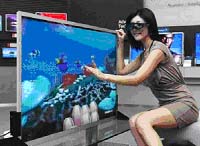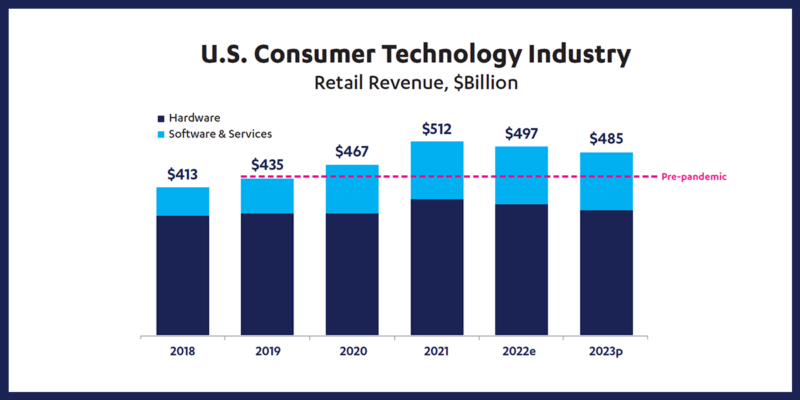3D “Yay” and “Nay” Sayers
We’re coming up on a month since the 2 010 CES, and like partygoers waking up with a hangover, manufacturers, analysts, and reporters are slowly sobering up, taking a second, harder look at the blizzard of 3D products and demonstrations that dominated this year’s show… and what it all means.
010 CES, and like partygoers waking up with a hangover, manufacturers, analysts, and reporters are slowly sobering up, taking a second, harder look at the blizzard of 3D products and demonstrations that dominated this year’s show… and what it all means.
TV manufacturers are definitely looking for a new angle or gimmick to drive TV sales through the next decade. HDTV by itself was a powerful sales motivator for the first ten years of the 21st century. Combined with large, inexpensive flat-panel TVs and high-resolution optical disc media, it created a buying frenzy that had its peak right before the current recession.
Will 3D provide the next spark for TV sales? It’s hard to say. There is considerable interest in stereoscopic TV; the long lines outside the Panasonic and Toshiba CES booths were ample evidence of that. And there’s no question that 3D works very well in certain configurations, such as on large screens in darkened rooms.
The fact is, 3D right now is like the Oklahoma Territory in the 1890s. 3D “Boomers” are lining up for the starting gun, so they can rush out and stake their claims to the 3D market. Meanwhile, some 3D “Sooners” are already jumping the gun, hoping to get their products established before 3D-to-the-home standards are adopted.
There’s no question TV manufacturers want this to work. Samsung announced last week that it had begun mass production of 40-inch, 46-inch, and 55-inch LCD panels with LED backlights that use 240Hz image processing. These panels are specifically designed to work with active shutter 3D glasses and the response time is claimed to be 4 milliseconds.
Samsung’s 7000-series and 8000-series plasma TVs are already equipped to handle 3D active shutter content and were also unveiled at the show. Both lines of TVs have 2D to 3D format conversion as well, so that is an emphatic “Yay!” for 3D.
On the other side, cable TV giant Comcast’s CEO Brian Roberts has weighed in with his two cents. Speaking to a Wall Street Journal reporter last week, Roberts said the 3D demos he saw at CES were “…the most impressive he has seen,” according to a story in Broadcasting and Cable.
But Roberts tempered his remarks by saying, “The question is; are you going to want to sit there and wear glasses four hours a day to watch TV. I don’t think so.” Roberts also stated his belief that the real impetus for TV now is “…everywhere, all the time viewing” rather than 3D. Is that a “Nay?”
Brian Mitchell, founder of the popular eCoustics.com Web site, today released a list of ‘Ten Reasons Why 3D TV May Fail.’ Some of those include the argument that “…3D viewing abruptly alters the social nature of TV watching,” along with the pitfalls from “lack of content” and “consumer confusion” about 3D. That’s definitely a “Nay!”
As regular DD readers know, ESPN, Discovery and DirecTV have all made commitments to launch 3D channels this year. ESPN will kick off (no pun intended) with World Cup coverage in 3D, while DirecTV’s 3D channels should be up and running by June, thanks to a new satellite that just went into orbit.
Launching new channels (let alone satellites) is an expensive proposition, and there’s no guarantee any of these efforts will succeed. So I’d say these new 3D HDTV program and channel commitments qualify as emphatic “Yays!”
These 3D ‘ups and downs’ mirror the problems that HDTV ran into when it first tried to lift off in the late 1990s. Remember? There were competing HD program formats (1080i and 720p), along with TV networks who said HD wasn’t even a sensible business proposition (Fox), a lack of professional production equipment, difficulties with the digital TV transmission format (the 8VSB vs. COFDM wars), and a slew of confusing TV definitions from CEA (SDTV, EDTV, HD-compatible, HD-ready).
Somehow consumers, producers, and TV networks managed to overcome all of this chaos and make HDTV a reality. So it’s still way too early in the game to claim that 3D is destined to fail. Similarly, it’s a good idea to avoid putting on rose-colored active shutter glasses, and assume 3D is going to be as successful as HDTV. There’s still too much work to be done, not the least of which is educating consumers about 3D — in particular, how it works and how it will be implemented in the home.
That’s neither a “Yay,” nor a “Nay.” It’s just a reality check…
Pete Putnam is an analyst for Insight Media. Reach him at pete@hdtvexpert.com





